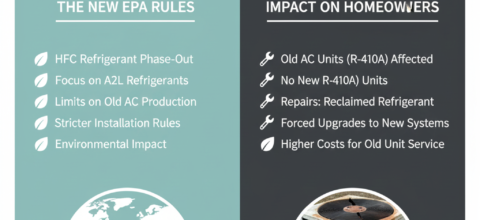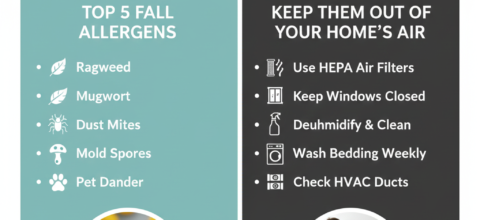What is Dirty Sock Syndrome and How Can You Avoid It ?
What is “Dirty Sock Syndrome”? Dirty Sock Syndrome is caused by bacteria growing on HVAC system coils, and refers to the unpleasant odor that comes from your residential or commercial heat pump coils.
ACHR News (Air Conditioning | Heating | Refrigeration) links DSS to these three main causes:
“Cooling coils and other AC components are not made in sterile environments, meaning that microbes cover all of their parts along with a small amount of lubricant.”
“During the first cooling event after installation, condensate brings life to the microbes, which initially use the lubricant as an initial food source.” Microbial decay (better known as “rot”) is the culprit of the foul stench that smells like a dirty sock.
Did you know? According to ASHRAE coil cleaning can save 10-25% of operation costs!
During certain times of the year when a heat pump may warm in the morning hours and then cool at noon and/or later hours, the system can produce condensate from noon onward, fueling growth for up to 16 hours – only to release odors and toxins during the next morning’s warming hours. Heat pump coil temperatures are often not sufficient to kill proliferating microbes. Those that may die simply serve as a future food source for continued proliferation.
How Can You Get Rid of Dirty Sock Syndrome?
The best way to get rid of the musky aroma is by thoroughly cleaning the coils in the HVAC system.
Our first step is always to schedule an on-site visit to take a look at the setup and size of the air handler unit. We also take this opportunity to check for any visible mold growth in the ductwork.
The second step is the “full system and evaporator coil cleaning, which involves: flushing the coils, determining the cause of the syndrome, as well as the cleaning and/or applying a sealant.
How Can You Avoid Dirty Sock Syndrome in the Future?
The best way to avoid dirty sock syndrome from occurring in the first place is to ensure that your HVAC system is serviced on a regular basis. After all, a good offense is always the best defense – even if the syndrome has already occurred, a thorough cleaning can prevent the problem from happening again.
Call 800-482-8224 to schedule an appointment with an Amazon Air Duct Cleaning Professional today!

You may have heard that the government is banning the refrigerant in your air conditioner. Before you worry about what happens to my R-410A air conditioner in 2025, let’s clear something up. The EPA HVAC rules for 2025 apply to new equipment made after January 1, 2025. Your existing unit is fine. You can keep using it, and nobody is forcing you to replace

Fall in New Jersey brings beautiful foliage and cooler weather, but it also means sneezing, itchy eyes, and congestion for many of us. Fall allergies can be tricky because we deal with everything from coastal ragweed to mold from damp leaves. If you know what’s triggering your symptoms, you can do something about it. You can’t control what’s happening outside, but you can make

Is your upstairs bedroom unbearably hot while your downstairs family room feels like an icebox? If you live in a split-level home in Paramus, this probably sounds familiar. These temperature swings aren’t just uncomfortable, they’re built into how split-level homes work. But you don’t have to live with it. HVAC zoning technology fixes the temperature imbalance that’s frustrated homeowners for decades. Why Split-Levels Have

If you own a historic home in Trenton, you already know what makes these houses incredible. High ceilings, original woodwork, hand-finished plaster walls. These details don’t exist in modern construction. But when July hits or January rolls around, keeping comfortable gets tricky. You can add climate control without tearing apart what makes your house special. Most people think they have to choose between keeping

That old beige thermostat on your wall? It wasn’t much to look at, and it didn’t do much thinking either. Today’s smart thermostats promise energy savings, remote control, and learning algorithms that adapt to your life. But are they worth it for your home, or is this just another tech gadget solving a problem that doesn’t exist? For homeowners in New Jersey, New York,

You may have heard that the government is banning the refrigerant in your air conditioner. Before you worry about what happens to my R-410A air conditioner in 2025, let’s clear something up. The EPA HVAC rules for 2025 apply to new equipment made after January 1, 2025. Your existing unit is fine. You can keep using it, and nobody is forcing you to replace

Fall in New Jersey brings beautiful foliage and cooler weather, but it also means sneezing, itchy eyes, and congestion for many of us. Fall allergies can be tricky because we deal with everything from coastal ragweed to mold from damp leaves. If you know what’s triggering your symptoms, you can do something about it. You can’t control what’s happening outside, but you can make

Is your upstairs bedroom unbearably hot while your downstairs family room feels like an icebox? If you live in a split-level home in Paramus, this probably sounds familiar. These temperature swings aren’t just uncomfortable, they’re built into how split-level homes work. But you don’t have to live with it. HVAC zoning technology fixes the temperature imbalance that’s frustrated homeowners for decades. Why Split-Levels Have

If you own a historic home in Trenton, you already know what makes these houses incredible. High ceilings, original woodwork, hand-finished plaster walls. These details don’t exist in modern construction. But when July hits or January rolls around, keeping comfortable gets tricky. You can add climate control without tearing apart what makes your house special. Most people think they have to choose between keeping

